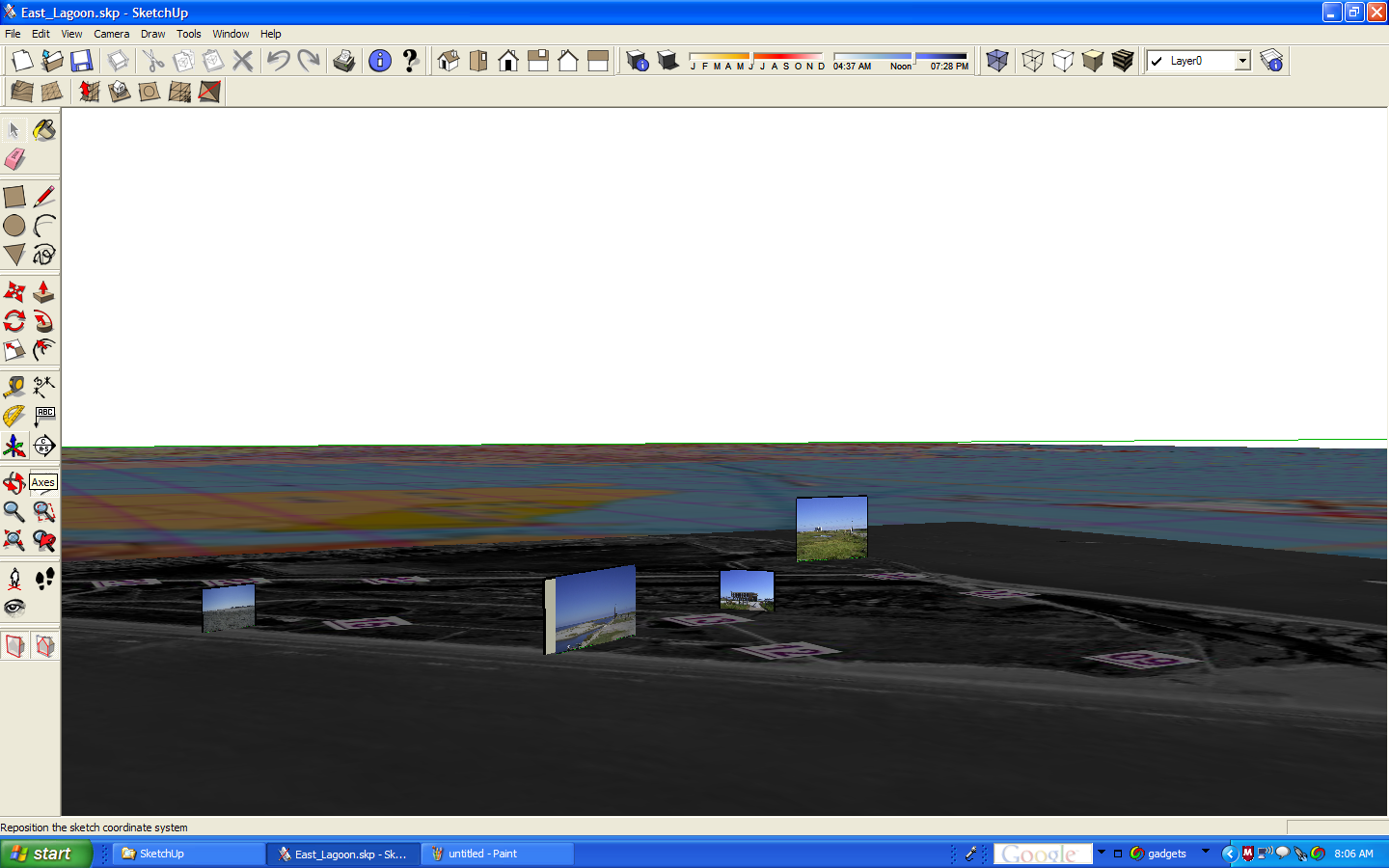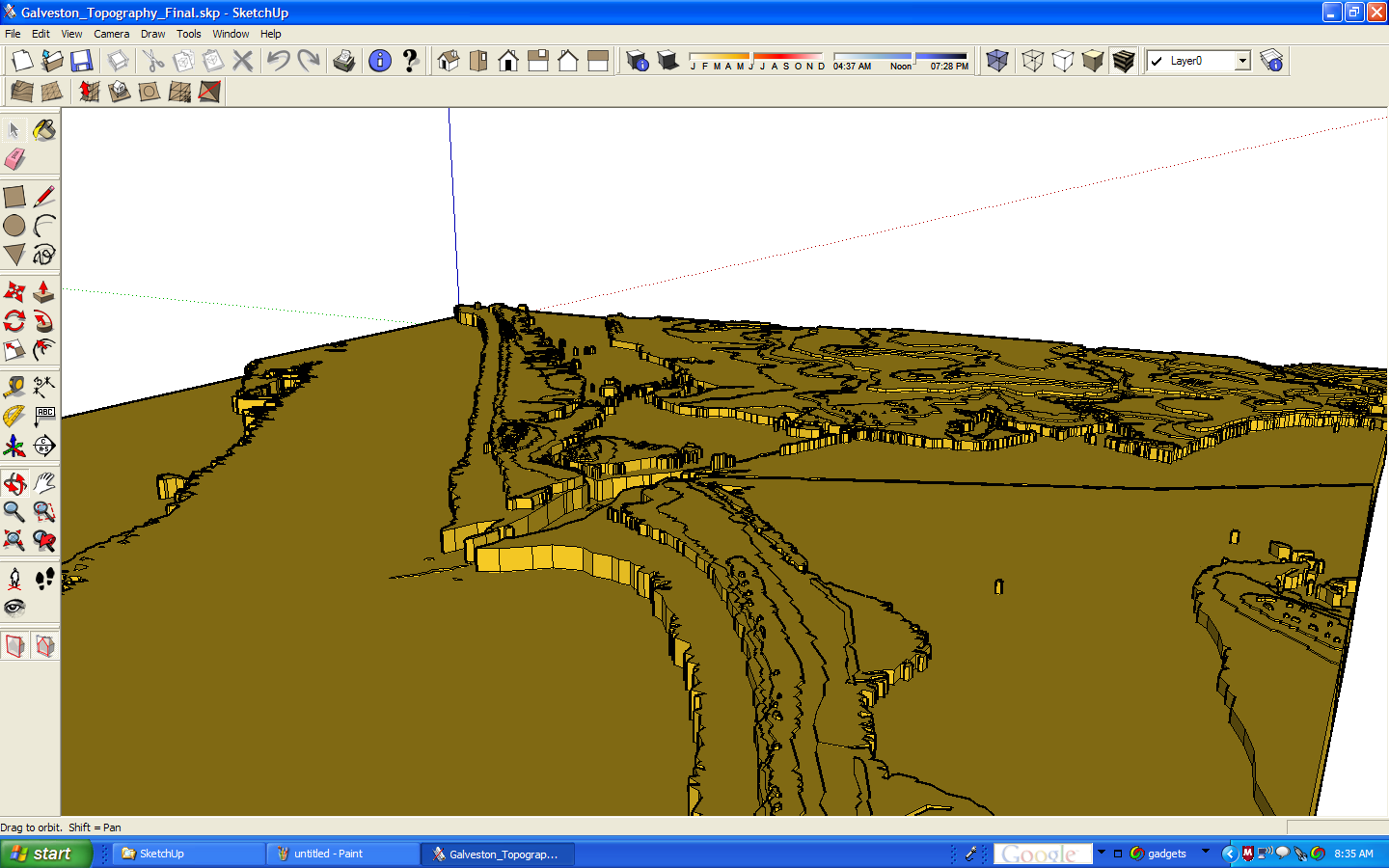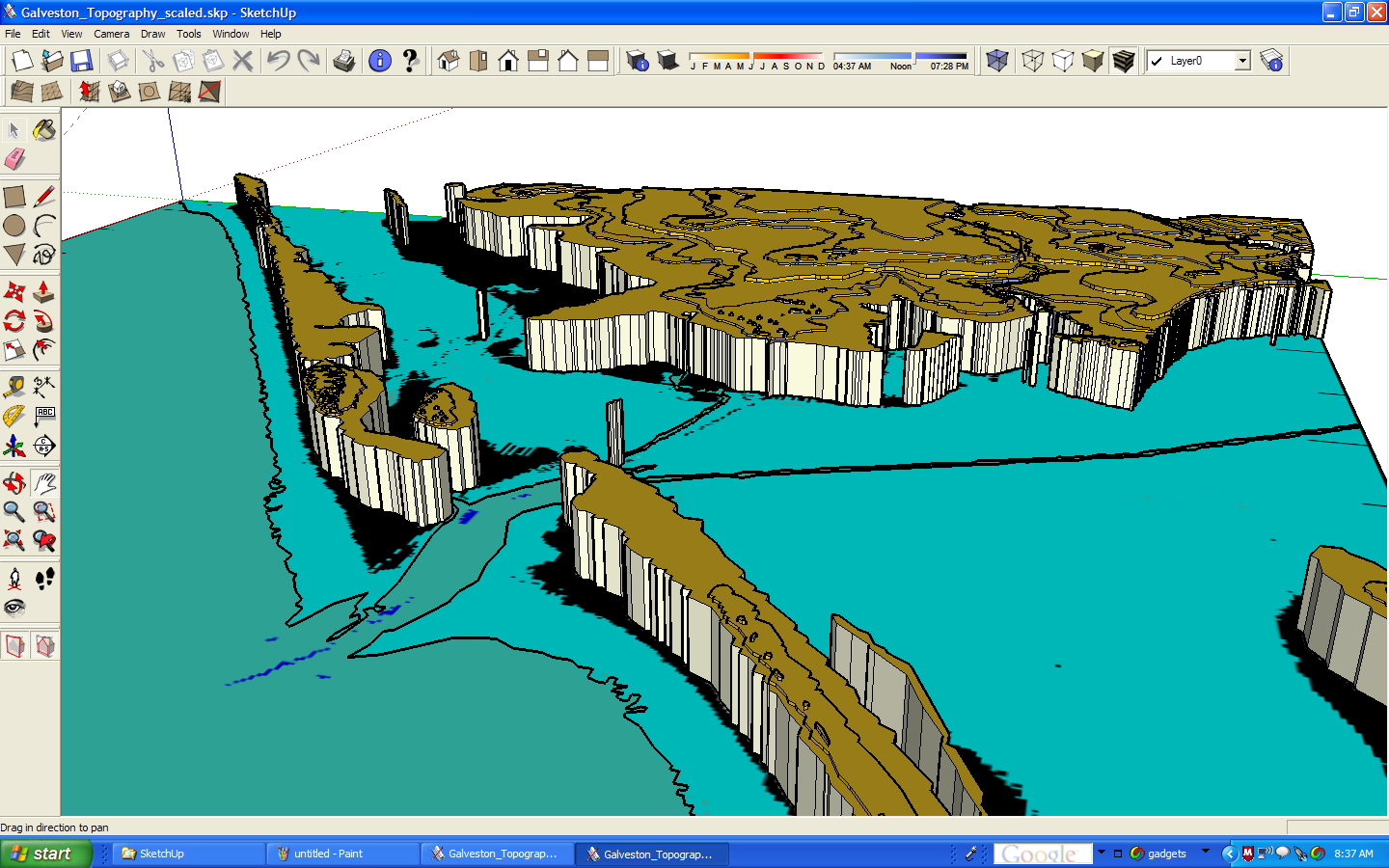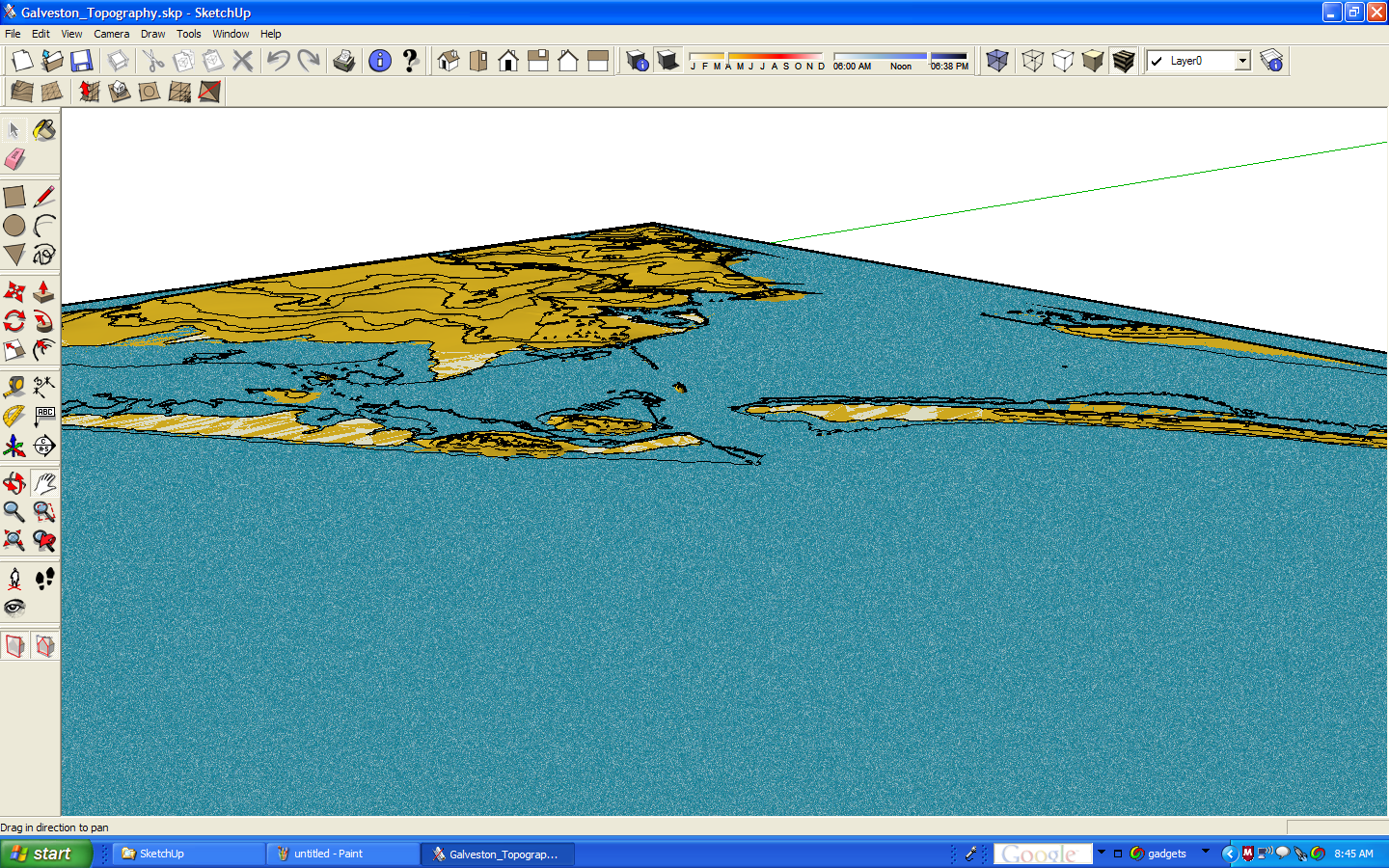|
In a very real sense, science is also acting upon these systems, pushing their boundaries, and learning what was, what is, and what is possible within the limitations of identified boundaries.
 |
|
 |
| Figure 43a. Integrating photos of habitats with a model of Galveston Island. |
|
Figure 43b. A 1000 x vertical exaggeration of Galveston topography. |
 |
|
 |
| Figure 43c. Onshore Galveston topography. (vertical exaggeration 1000 x) |
|
Figure 43d. Impact of a small storm surge on Galveston Island. |
As big as the Galveston hurricane of 1900 was, there is little, if any, imprint of this storm in the geologic record. And yet this storm only happened a little over 100 years ago. To put this 100 years in perspective, this length of time is 1.67% of the time since Creationists say the earth was initially created by God. And yet there is almost no mark from this storm to be found in the geologic record. However, we can sail or fly along the Gulf Coast and recognize the impact of thousands of centuries of hurricanes in shaping the current physiography. We can look at modern seismic sections and see the impact of giant storms, some of which must have consistently attacked localities for millennia, repeated over and over and over in the geologic record.
|